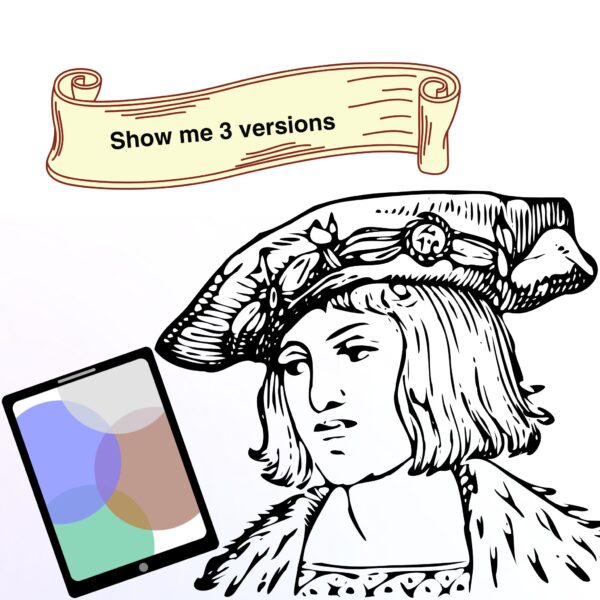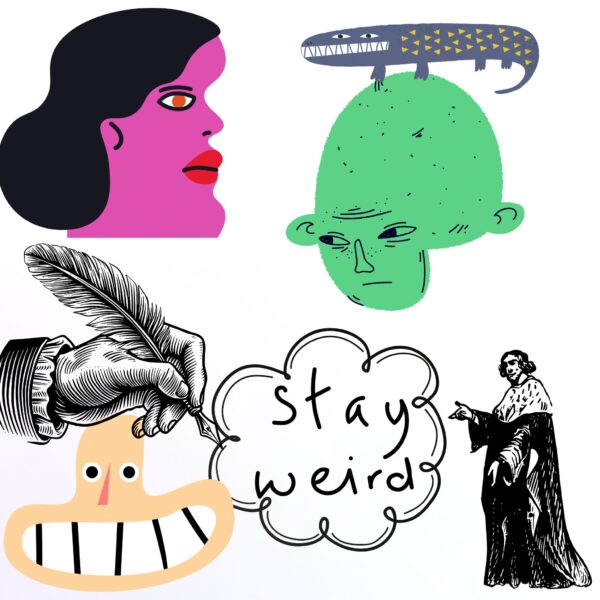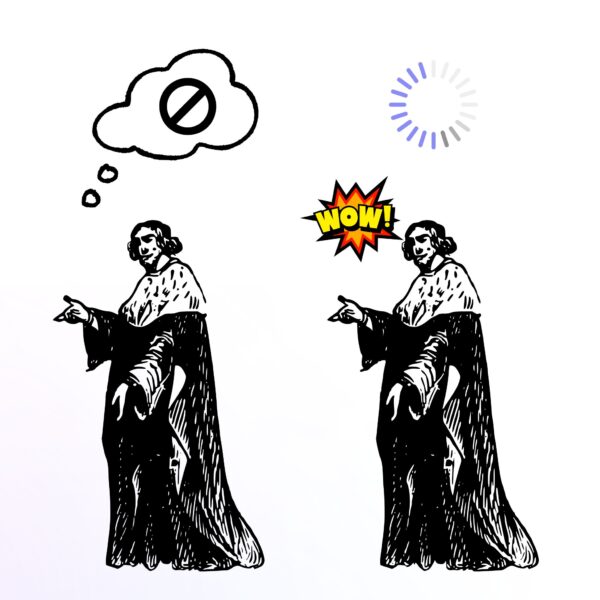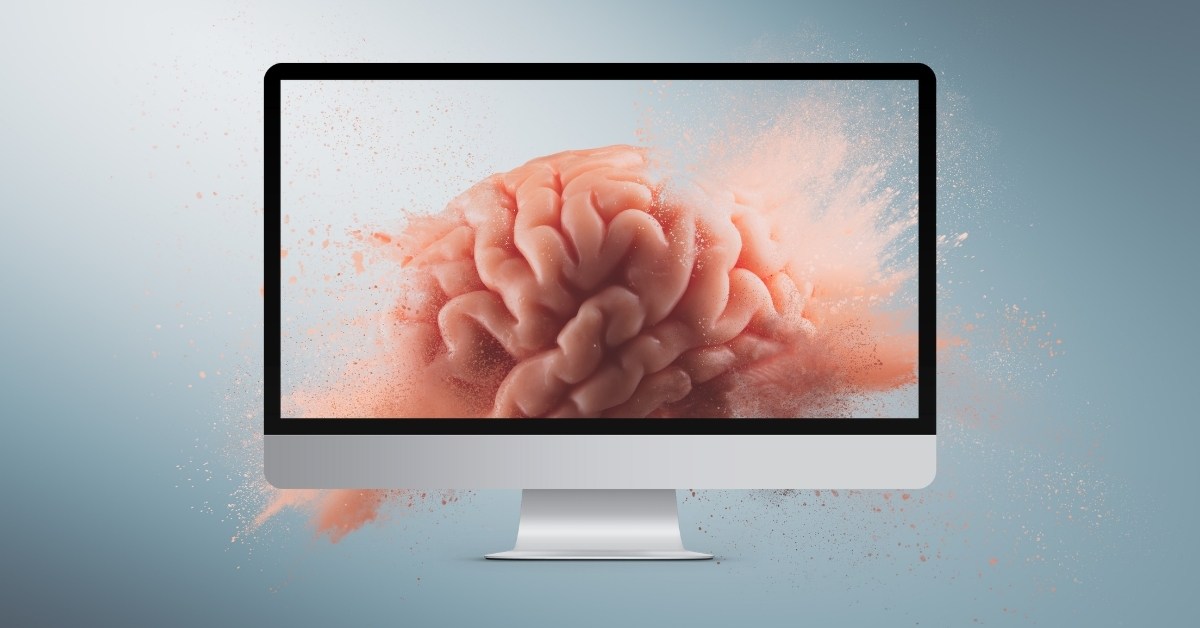AI and creativity have crashed the party as the new couple in town, and they are still going strong. Whether you’re a designer, a writer, a student, or just someone who loves good art, you’ve probably heard the debate: Will AI kill human creativity, or will it launch us into a new artistic renaissance?
Here’s the spoiler: It’s not a fight. It’s a dance.
In this post, we’ll unpack how AI is changing what it means to be creative and why your “human spark” still matters even if argued otherwise. We’ll also discuss how next-generation tools like Aurora Slides, Plus AI for PowerPoint, and Gamma AI Presentation are helping people and teams tell more powerful stories than ever in less time and with less technical skills. Along the way, we’ll see why comparing AI to the arrival of photography is more than just a clever analogy—and how leading thinkers advise using AI without losing your originality.
Let’s dive in, starting with the philosophical roots of creativity and how they’re being shaken up by technology.

If you want to dive straight into testing AI on your own for creative reasons, feel free to get started here.
Creativity in the Age of AI: A Philosophical Shift
Creativity isn’t just about producing art—it’s about how we see ourselves as makers and thinkers. Right now, our collective idea of what it means to “be creative” is shifting, thanks to the rise of artificial intelligence. Before we can grapple with the technology, we need to understand the centuries-old debate about what creativity even is.
From Techne to Poiein – What Really Counts as “Creative”?
The ancient Greeks had two words for art: techne (the craft of making things by rules) and poiein (the act of creating something from nothing, almost like magic). For centuries, we’ve romanticized the latter—creativity as mystical, unpredictable, deeply personal.
Then comes AI, a system built on data, rules, and pattern recognition. Is machine-made art “creative”? Or is it just remixing what’s already out there?
Analogy time:
When photography was invented in the 19th century, painters freaked out. Why paint when a camera could capture perfect detail in seconds? But instead of killing painting, photography freed it. Artists like Monet and Van Gogh ditched realism and dove into impressionism, emotion, and new ways of seeing the world.
“AI is doing to creative work what photography did to painting: it’s pushing us to find new meaning, not just new outputs.”
Now that we’ve explored how our definitions of creativity are being challenged, let’s look at the specific strengths and limits AI brings to the table.
What AI Can—and Can’t—Do for Creativity
This isn’t a case of “AI good” or “AI bad.” It’s more nuanced. Understanding the actual capabilities—and the boundaries—of AI helps creatives and teams decide how to use it, where to lean in, and when to trust their own instincts.
Where AI Shines: Speed, Scale, and Suggestion
Artificial intelligence excels at delivering quantity, speed, and pattern recognition. It can generate hundreds of sketches, melodies, or headlines in seconds, automate repetitive grunt work, and spot connections in data that would take humans ages.
Table: The Human Creative Continuum vs. AI Capabilities
| Human-Unique Attributes | AI-Capable Attributes |
|---|---|
| Emotional Authenticity & Lived Experience | Rapid Ideation & Prototyping |
| Intuition, Intentionality, & “Creative Spark” | Data-Driven Pattern Generation & Predicting |
| Subversive Originality & Rule-Breaking | Automation & Efficiency |
| Cultural & Social Context | Stylistic Replication & Remixing |
| Empathy & Judgment | Algorithmic Problem-Solving |

The Blurred Line: Why Can’t We Always Tell AI Creativity from Human Creativity?
If you dropped an AI-generated poem or painting into a gallery alongside human works, could you always tell which is which? The reality is, humans themselves are wildly diverse, surprising, and random. Anything an AI “dreams up” could plausibly have come from a person—and vice versa. That’s the paradox of our era: the boundary between human and machine-made creativity is shifting, and often, it’s indistinguishable until you check the source.
So why, then, do people react so strongly when they learn a beautiful image or moving piece of writing was made by AI, not a human? The answer is less about the art itself, and more about what it represents.
Why Does AI-Generated Art Trigger Such Strong Emotions?
Something interesting we should all start noticing is that most people might praise an artwork—until they discover it was made by AI. Suddenly, the same piece is dismissed as “soulless,” “cheating,” or “not real art.” As humans, we have to admit to ourselves that the backlash isn’t really about the actual content. Is about the fact we are entering into a new era where humanity is being both challenged and empowered. There’s this Reddit Post I really embedded below where you can read more people’s stance on this matter:
Why do people hate AI-generated content even when it’s good?
byu/BILALMESSAI inaiArt
Here’s what’s really at play according to what BILALMESSAI posted and noticed:
- It challenges the myth of human exceptionalism.
For centuries, we’ve believed creativity is a uniquely human spark. If a machine can move us or make us laugh, what does that say about our own talents? - It exposes economic fears.
AI is shaking up creative industries. For artists, writers, and designers, every new AI-generated piece is a reminder that jobs and livelihoods are evolving—sometimes in threatening ways. - It triggers identity anxiety.
For many, creative work is more than a product; it’s part of their identity. When AI mimics that—intentionally or not—it can feel like someone else putting on your face and getting applause for it. - It breaks the rules of effort-based validation.
We’re wired to respect hard work. When AI can generate something stunning in seconds, it upends the old equation of “more effort = more value.” - It lacks a backstory.
We love to connect with the creator, not just the creation. AI has no heartbreak, no childhood, no muse. Even the most beautiful output can feel hollow to some—a song without a singer.
It’s understandable, then, that people’s reactions to AI art are so complex and sometimes intense. Change—especially when it affects something as personal as creativity—can feel unsettling. Maybe what we’re witnessing isn’t so much about rejecting new tools, but about navigating what it means to be creative in a world where the rules are shifting. As we move forward, perhaps the real opportunity is to find ways for both human and AI creativity to coexist, challenge each other, and inspire new forms of expression we haven’t even imagined yet.
Redefining the Value of Art in an AI World
Maybe, as these communities are discovering, the discomfort isn’t really about the art at all—it’s about what the art means for our sense of self, our jobs, and our ideas of value. AI art isn’t “bad”; it’s just unsettling, because it forces us to ask new questions about identity, effort, and what makes something meaningful.
Rather than draw a hard line between “real” and “fake,” maybe it’s time to accept that creativity—whether sparked by a neuron or a neural net—will always be a mix of mystery, context, and collaboration.
Thoughts? Join the conversation on r/aiArt. And if you currently have a small business around your art, learn in our Learning Vault all about AI for small business.
AI, Social Media, and the Rise of Unfiltered Originality
AI is changing not just how we create, but who gets to create—and who gets seen. Social media is now a showcase for the wildest, most original ideas, many powered by new AI tools that make creative expression easier and more accessible than ever.
From Imagination to Instantly Shareable Reality
One of the most surprising effects of AI’s democratization is the explosion of “weirdness” and high-quality originality we now encounter on social media. In the past, many people with wild, creative ideas lacked the resources—money, connections, or technical skills—to bring their visions to life. Today, all you need is an idea and the ability to describe it: AI tools can instantly generate visuals, music, or stories based on a few sentences. Suddenly, what used to stay locked in someone’s imagination can be shared with the world in minutes.
The End of Gatekeepers—Creativity Goes Public
This shift has also changed who decides what gets made and seen. The old gatekeepers—magazine editors, movie producers, advertising executives—no longer have the final say. The filter that once decided which ideas deserved full production value is evaporating. Now, social media is flooded with strange, clever, and highly original work, much of it originating from people who might never have had a platform before. Even when AI is doing the rendering, the spark still comes from the human mind that prompts it.

Competing in the Crowd—A New Creative Challenge
But this new creative abundance comes with a twist: The playing field is now wide open, and anyone with a few spare minutes and a wild idea can compete for attention. As a result, the bar for creativity is rising fast. To stand out, creators need to be 10x more original, bold, or thought-provoking. There’s no longer a team of decision-makers giving you permission to create—you just do it, and so does everyone else. For audiences, this means more novelty, unpredictability, and diversity than ever before. For creators, it means the challenge (and opportunity) is to make work that truly grabs attention in an endlessly scrolling world.
Collaboration, Immersion, and Infinite Possibilities
As highlighted by the Leadership Institute, the future possibilities for AI and human creativity on social media are only just beginning to unfold. The integration of technologies like augmented reality and advanced chatbots will bring even more immersive and interactive experiences, while enabling creators to personalize storytelling and user engagement at scale.
“The relationship between AI and human creativity is not merely one of replacement; rather, it is a collaboration that can lead to richer, more diverse content” – The Leadership Institute.
As AI evolves, expect social platforms to become even more vibrant, unpredictable, and full of human imagination—amplified, not stifled, by machine intelligence.
How to Use AI Without Killing Your Creativity
The best advice sometimes comes from outside the echo chamber. Dr. Anil Doshi’s TEDx talk, “How to use AI without killing your creativity”, offers a practical and optimistic roadmap for anyone feeling both excited and anxious about AI’s role in creative work.
Lessons from Dr. Anil Doshi’s TEDx Talk
Dr. Doshi proposes a simple but profound framework:
- AI should expand your mind, not replace it.
Doshi argues, “Use AI as a partner. Start with your own ideas, see what AI offers, then return to your human judgment. That’s where the magic happens.” - Creativity is about making connections, not just originality.
“The most creative outcomes come from meaningful combinations, not from a blank slate.” - Let AI be invisible.
The best creative work comes when AI supports your process quietly, not when it takes the wheel.
“If you want to use AI without killing your creativity, you have to remain the editor, the curator, the storyteller. AI is a powerful tool, but you’re still the artist.” — Dr. Anil Doshi
Armed with this mindset, let’s see how real-world creators are putting AI to work—without losing their unique voice.
See full video here:
AI as Co-Creator – The New Workflow
The reality is, the best creative work today is often a mashup of human intuition and machine suggestion. More and more, creatives treat AI as a co-writer or collaborator, not a replacement.
The Co-Creator Model in the Wild
Artists like Refik Anadol don’t treat AI as a threat—they treat it as a collaborator. Anadol uses machine learning “StyleGAN2 ADA” to turn millions of images from museum archives into ever-changing digital installations. This works by him being able to store an infinite amount of information and art inside the AI. Musicians and writers are doing the same and using AI as a creative partner: brainstorm with AI, then use human taste to pick, cut, and polish. To try to avoid getting into the details of how they actually use the technology; this quote from the article Unsupervised — Machine Hallucinations — MoMA; summarizes it best:
” In other words, the machine allows the artist to trace its “unconscious decisions,” in a network of intricate and poetic connections.”
Humans hit so many roofs and limitations working by themselves because we don’t have infinite memory, storage nor data retrieval. All these things don’t sound artistic but are essential in art because naturally artists like to reference the past, present, future, other artists, and historical events. With the help of AI, they can now properly reference, mix, and fuse all types of styles eventually creating something never seen before and that’s a huge step for humanity.
AI as a co-creator sounds cool right? But did you know that AI can also be a business partner you don’t have to split earnings with. If you’re an artist, you just need to learn how to create an AI business by yourself as an artist.
Why “Humans with AI” Outperform “Humans without”
Here’s the twist: it’s not about AI stealing jobs, the actual problem will be a “skills gap”. The real risk is being left behind if you don’t learn to work with these new tools. The most successful teams are those who blend curiosity and technical know-how with that irreplaceable human taste.
“AI can handle repetitive, data-driven tasks, liberating humans to focus on more creative, strategic endeavors. This symbiotic relationship unleashes human potential.” – Viscovery
Something to keep in mind is that average humans can power themselves by utilizing tools. If you perceive AI as a threat you are not approaching it as a stepping stone rather an obstacle. Find ways to use AI to your favor, be smart about it and open minded. Here are some ways AI can help you in your art process or creative endeavors:
| Capability/Feature | How AI and Creativity Help |
|---|---|
| Rapid Ideation | AI can generate dozens of logo drafts, color palettes, or story outlines in minutes, letting you quickly explore options and jumpstart your creative process. |
| Effortless Personalization | Marketers use AI to instantly tailor ads or content for different audience segments—something that would take days manually. |
| Smart Research | Writers and designers let AI summarize articles, pull key facts, or even suggest references, so they spend less time searching and more time creating. |
| Enhanced Brainstorming | AI is a tireless collaborator, providing fresh prompts, remixing your ideas, and helping you break through creative blocks. |
| Polished Production | AI fixes grammar, enhances images, upscales video, and even removes background noise from audio, elevating your final product with minimal effort. |
| Data-Driven Insights | Teams use AI to analyze what’s trending, predict audience reactions, and recommend what to work on next—making creative decisions smarter and more strategic. |
| Automated Repetitive Tasks | From resizing images for every social platform to converting video transcriptions into blog posts, AI takes care of the boring stuff so you can focus on big ideas. |
| Cross-Disciplinary Collaboration | AI bridges gaps between fields, helping, for example, a designer quickly mock up a website without coding or an author visualize a scene for an illustrator. |
| 24/7 Feedback | AI-powered tools can review your work at any hour, suggesting improvements or flagging issues that a human editor might miss, speeding up revision cycles. |
| Effortless Inspiration Management | AI-powered tools can catalog your sketches, drafts, or mood boards, automatically tagging and organizing your creative work or inspirations. This makes it easy to retrieve past ideas, track your artistic evolution, or spark new projects with a quick search—even years later. |
| Seamless Collaboration Across Borders | AI platforms make it easy for artists, writers, and creators from around the world to collaborate in real-time—translating languages, merging files, tracking feedback, and even suggesting ways to blend different artistic styles. This enables truly global teamwork and helps creative ideas evolve faster than ever before. |

Speaking of collaboration, let’s look at one tool that’s making AI-powered creativity accessible for everyone, not just data scientists or designers…
Visual Storytelling for the Hybrid Age
You know that moment when you stare at a mountain of notes, trying to turn them into something presentable? That’s where AI built for creativity comes in. Aurora Slides doesn’t just save time—it lets you focus on your message, your story, your creativity. The AI is there when you need it, but you’re still in control.
Solving the Universal Pain of Unstructured Information
- All-in-one workflow: Drop in any kind of content—text, bullet points, audio transcripts—and Aurora Slides crafts a compelling, audience-ready presentation.
- Designer-quality templates: You get stunning slides without spending hours on formatting.
- Real-time AI collaboration: Want to revise or reframe? Just tell Aurora Slides what you want—it’ll do the heavy lifting.
- Control, share, and publish: Keep your slides private, share with your team, or publish instantly for feedback.
While Aurora Slides offers an all-in-one workflow and real-time creative collaboration, it’s not the only player in this space. Other notable AI-powered presentation tools include Plus AI for PowerPoint (official site) and Gamma AI (official site). Each platform brings its own blend of features, design sensibility, and workflow focus—so it’s worth exploring which best fits your needs.
Ultimately, what’s exciting about this new era is how AI is shifting the creative process itself. Instead of replacing human originality, the best tools are amplifying it—freeing people to spend less time on tedious formatting and more time shaping impactful narratives. The debate around AI and creativity will keep evolving, but one thing is clear: when humans and smart tools work together, the potential for fresh, compelling visual storytelling is greater than ever.
The Public Debate – “Soulless” or “Liberating”?
Everywhere you look—forums, comment sections, group chats—the question of AI and creativity is sparking passionate debate. Is AI a revolutionary tool that democratizes self-expression, or does it threaten the heart and soul of what it means to be an artist? The answers aren’t simple, and opinions are as varied as the art itself.
The conversation about AI and creativity is raw, real, and sometimes messy. Online communities are split: some see AI as the ultimate shortcut, while others worry it’s erasing what makes art meaningful.
What Creators and Critics Say
Here’s a snapshot of what people are actually saying online:
| Core Argument | Proponents’ View | Opponents’ View |
|---|---|---|
| Ethical Concerns | “AI is a skill and a tool” | “Mass theft” of creative work |
| Economic Fears | “AI democratizes, enabling more individuals” | “AI devalues human craft” |
| Nature of Creativity | “New partner for both aesthetic and functional” | “Soulless – AI tends to repeat and shuffle“ |
| Effort vs. Output | “Fast, stunning results” | “Undermines human effort” |
And finally here’s another Reddit user’s opinion against AI generated art:
Comment
byu/dainty_ape from discussion
inArtistLounge
Debate aside, practical concerns—like copyright and ethics—are shaping how AI is actually used in creative work.
At the end of the day, the conversation about AI art isn’t just about the technology—it’s about what we value, and how we want to define creativity together, moving forward.
Legal, Ethical & Practical Challenges
The rise of generative AI isn’t just an artistic issue—it’s a legal and ethical one, too. Who owns the rights to AI-generated work? What’s fair use in the age of machine learning?
Copyright, Authorship, and the Black Box
The U.S. Copyright Office says AI-only works can’t be copyrighted. If you want protection, you have to show real human authorship—a meaningful creative contribution, not just a prompt;
To avoid legal minefields, many companies are building “walled gardens”—AI models trained only on licensed data.
The New Creative Roles
What’s really needed now? People who can curate, judge, provide cultural insight, and add taste to AI-generated work. In industries from marketing to music to healthcare, those “soft skills” are becoming the most future-proof jobs.
With all these new pressures and opportunities, what does the future look like for those who want to thrive as creative professionals?
Conclusion – The Dance of Human and Machine
AI isn’t replacing artists. It’s reshaping what it means to create. The best work of tomorrow will come from those who use AI as a partner—not a substitute.
What should you do?
- Upskill: Learn to collaborate with AI. The more you know, the more powerful your creativity becomes.
- Double down on what’s uniquely human: Empathy, taste, narrative, lived experience.
- Try new tools: Let Aurora Slides or similar platforms handle the grunt work, so you can focus on your story.
Ready to create your next story together?
Try Aurora Slides’ AI Deck Builder capabilities for your next project—see what happens when AI and your imagination waltz.
Frequently Asked Questions (FAQs)
Can AI-generated work be copyrighted?
A: No—unless a human’s creative contribution is clear.
Is AI going to replace artists?
A: No. AI is a tool, not a replacement. The future is collaboration.
How does Aurora Slides keep my information secure and unique?
A: You control sharing and privacy. AI enables, but you—and your data—stay in charge. To learn more about what Aurora has to offer visit here.
Can AI create truly original ideas, or does it just remix existing ones?
A: AI can generate novel combinations and surprising outputs, but it relies on patterns from its training data. The “spark” of originality—connecting ideas in ways never seen before—still comes most powerfully from human experience and intent.
What’s the best way to use AI as a creative professional without losing your own voice?
A: Start with your own ideas or vision, use AI for brainstorming, exploration, and deck writing, But, always return to human judgment for editing, curation, and storytelling. As Dr. Anil Doshi said: “AI is a powerful tool, but you’re still the artist”.
